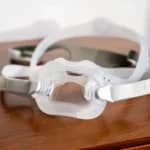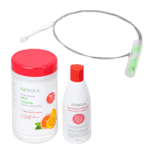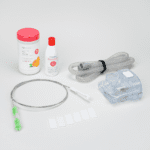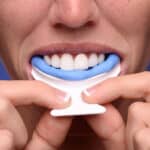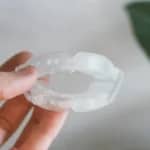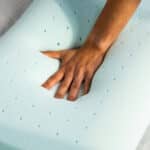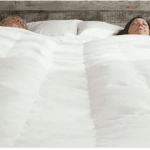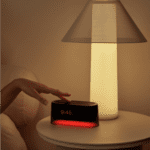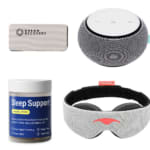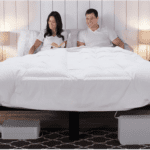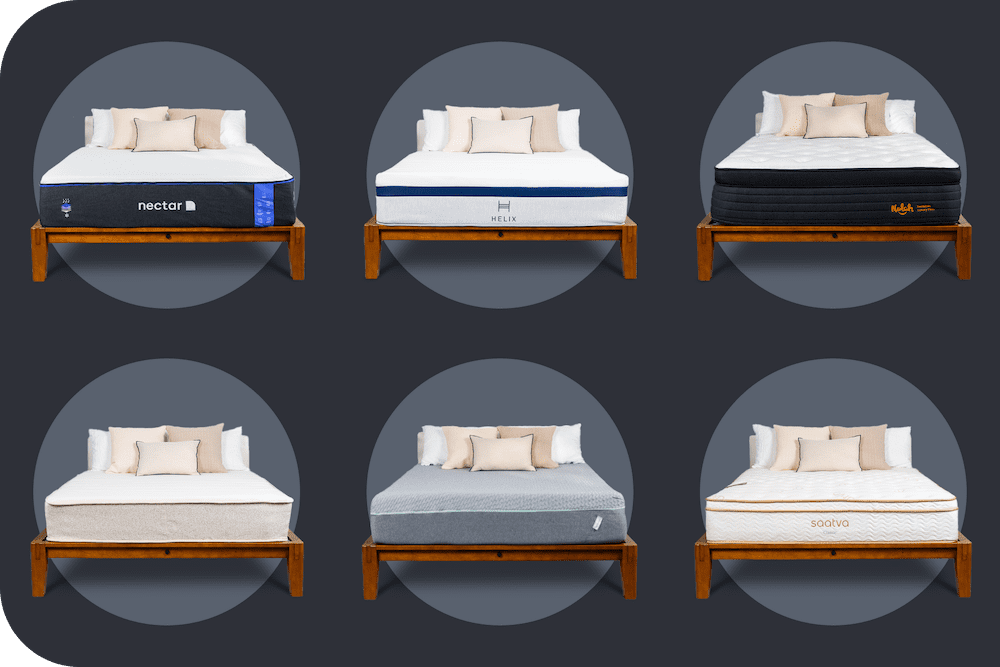If you keep tossing and turning or wake up with new aches and pains, a sagging mattress may be the culprit. As mattresses wear out, they lose the ability to support your spine evenly. Though all beds will eventually sag, certain features in a mattress can help combat the issue.
Our team chose several models that stood out during testing in our sleep lab. Each of our top picks has a construction detail designed to prevent it from bottoming out prematurely. We also included tips on how to prevent sagging and what to look out for when shopping.
Innerspring mattresses are known for their support — check out our choices for the best innerspring mattress if you’re interested in this mattress type. Our picks for the best mattress of 2025 also include models designed to withstand sagging.
The Best Mattresses That Won’t Sag
-
Best Overall Mattress
–
Nolah Evolution 15
View Details
-
Best Value Mattress
–
Nectar Mattress
View Details
-
Best Luxury Mattress
–
Saatva Latex Hybrid
View Details
-
Best Mattress For Couples
–
Helix Dawn
View Details
-
Best Mattress For Heavy People
–
WinkBed Plus
View Details
Swipe for more
Best Overall Mattress
Nolah Evolution 15
25% off sitewide. Save an additional $50 with code: SF50
25% off sitewide. Save an additional $50 with code: SF50
We found the Nolah Evolution 15 offers a strong mix of performance features, due largely to a hybrid design that is reinforced at the edges to resist sagging. Available in three firmness levels, the mattress is a suitable option for nearly every sleep position and body type.

Ideal For
Combination Sleepers
Firmness
Medium, Medium Firm, Firm Options
Surface Usage
Full Surface
Feel
Bouncy, Supportive Surface
Pros & Cons

-
Pros
-
Available in three firmness options to suit a range of sleepers
-
Zoned support system and thick perimeter coils form a strong structure
-
Pocketed coils create responsive sleep surface
-
-
Cons
-
Springs make some noise with movement
-
Sleepers under 130 pounds may experience slight pressure points
-
Our Take

The Nolah Evolution 15 is a well-rounded hybrid mattress available in multiple firmness options. Designed with a reinforced edge, this bed is less prone to sagging than some other hybrid models we’ve tested.
Why We Like It
The Nolah Evolution 15 has a 15-inch profile. Three layers of polyfoam in the comfort system offer pressure relief, with a plush Euro-top cover that cushions your body regardless of firmness level. The comfort system contains ArcticTex fibers and graphite that are intended to help with temperature regulation. A support core made of pocketed coils gives the mattress a responsive feel, making it suitable for sex and ease of movement. Thick coils around the perimeter add greater edge support and overall durability that resists sagging.
How Does It Feel?
Nolah offers this mattress in three firmness levels — medium (5), medium firm (6), and firm (8). Our testing team found at least one suitable firmness option for most sleep positions and body types. The softest model earned high marks from side sleepers up to 230 pounds and back sleepers under 130 pounds. The medium firm option performed well with side sleepers over 130 pounds and most back sleepers. The firm model was comfortable for back and stomach sleepers over 130 pounds.
Sleeper Type Ratings

The ratings below indicate how suitable this mattress is for different sleeping positions and sleeper weights, taking into account factors such as support and pressure relief.
Best Value Mattress
Nectar Mattress
Save 50% on mattresses & 66% on bundles
Save 50% on mattresses & 66% on bundles
Foam beds have a tendency to sag along the edges, but the Nectar Mattress resists sagging slightly more than some all-foam competitors. It’s a good fit for shoppers seeking a foam mattress that doesn’t sag as much and carries a reasonable price-point.

Ideal For
Side Sleepers
Firmness
Medium Firm
Surface Usage
Edges Sink a Bit
Feel
Bouncy, Supportive Surface
Pros & Cons

-
Pros
-
Top-notch motion isolation
-
Strong edge support for a foam mattress
-
365-night sleep trial and lifetime limited warranty
-
-
Cons
-
Better for sleepers who like sleeping “in” their mattress
-
Contouring foam restricts movement a bit and may trap heat
-
May lack support for stomach sleepers
-
Our Take

The Nectar Mattress carries a reasonable price-point for an all-foam mattress, especially one that outperforms other foam models when it comes to support and sag resistance. The foam design also offers very strong motion isolation and pressure relief.
Why We Like It
The foam layers deeply cradle your body, relieving pressure off areas like your hips, shoulders, and spine. This impressed sleepers on our team who tend to experience uncomfortable pressure buildup during sleep. The foam also absorbed a lot of motion, so testers barely felt each other’s movement when sharing the mattress.
How Does It Feel?
The Nectar Mattress begins with a layer of memory foam followed by a thick polyfoam layer. This comfort system provides a plush feel and strong contouring that was especially popular with our testing team’s side sleepers. The support core is made of high-density polyfoam that offers sturdy support. The mix of cushioning and support felt most comfortable to side and back sleepers up to 230 pounds and stomach sleepers weighing less than 130 pounds.
Scoring Breakdown

The ratings below indicate how suitable this mattress is for different sleeping positions and sleeper weights, taking into account factors such as support and pressure relief.
Best Luxury Mattress
Saatva Latex Hybrid
15% off orders of $1,000 or more
15% off orders of $1,000 or more
The Saatva Latex Hybrid is constructed with durable latex that resists sagging over time. The mattress sleeps cool and has a responsive surface that is easy to move around on, making it well suited for couples during intimate activities.

Ideal For
Couples
Firmness
Medium Firm
Surface Usage
Full Surface
Feel
Bouncy, Supportive Surface
Pros & Cons

-
Pros
-
Responsive sleep surface works well for combination sleepers
-
Made with breathable and durable natural materials
-
Zoned layers bolster the spine and lower back
-
-
Cons
-
Above-average price-point
-
You may feel your partner’s movements
-
Doesn’t offer the close-conforming “hug” of memory foam
-
Our Take

The Saatva Latex Hybrid checks a lot of boxes for a high-quality mattress. It sleeps cool and promotes spinal alignment for a wide array of sleepers. Latex is also one of the more durable mattress materials you’ll find on the market, so this model resists sagging over time.
Why We Like It
Typical of latex mattresses, the Saatva Latex Hybrid is easy to move around on and has a responsive surface that many couples appreciate for sex. The wool and latex are both organic, with certification from the Global Organic Textile Standard (GOTS) and Global Organic Latex Standard (GOLS), respectively, to guarantee the materials were organically sourced. Certification from the Rainforest Alliance ensures the mattress was produced using sustainable manufacturing practices.
How Does It Feel?
Latex mattresses tend to be highly supportive and responsive, and the Saatva Latex Hybrid is no exception. A wool comfort layer lightly cushions the body, followed by a latex layer that balances support and moderate pressure relief. The coil support core generates sturdy pushback. Among our testers, back sleepers up to 230 pounds and stomach sleepers between 130 and 230 pounds felt most comfortable on the bed. Side sleepers weighing less than 130 pounds may find it too firm, since these sleepers need more cushioning.
Sleeper Type Ratings

The ratings below indicate how suitable this mattress is for different sleeping positions and sleeper weights, taking into account factors such as support and pressure relief.
Best Mattress For Couples
Helix Dawn
Save 20% sitewide with code: SPRING20
Save 20% sitewide with code: SPRING20
The Helix Dawn offers responsiveness, strong edge support, and temperature neutrality — all qualities that couples might seek out when looking for a new mattress. The bed is especially well suited for sleepers who need a bed with solid support.
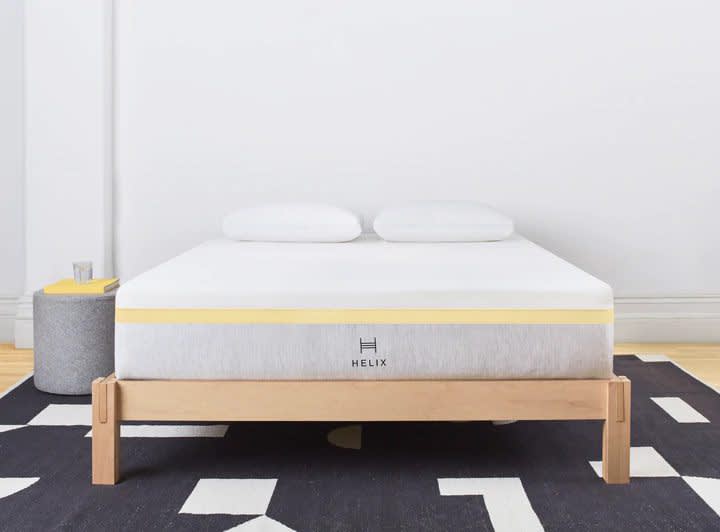
Ideal For
Couples
Firmness
Firm
Surface Usage
Full Surface
Feel
Plush, Supportive Surface
Pros & Cons

-
Pros
-
Air flows freely to keep sleepers cool
-
Firm sleep surface feels responsive and easy to move on
-
Reinforced edges enable use of the entire bed
-
-
Cons
-
Doesn’t provide significant motion isolation
-
People under 130 pounds may need more cushioning
-
May give off a faint off-gassing smell at first
-
Our Take

The Helix Dawn has a firmer feel than many mattresses composed of foam and coils. This makes the bed sturdy and supportive, while maintaining moderate cushioning. The responsive surface and cooling design are suitable for couples who prioritize ease of movement and temperature neutrality.
Why We Like It
The Helix Dawn features reinforcement on its two longest edges to promote durability and minimize sagging. The mattress offers very good temperature neutrality due to airflow through the coil system, but you can also opt for a GlacioTex Cooling Cover to further enhance cooling.
How Does It Feel?
The Helix Dawn rates 8 on our 10-point firmness scale. The comfort system contains two polyfoam layers that lightly cradle your body for moderate pressure relief, while offering an overall firmer feel than some other foam hybrid models that we’ve tested. The coil system generates sturdy support to keep your body on an even plane.
Our testing team found the Helix Dawn was best suited for back and stomach sleepers weighing over 130 pounds. Side sleepers, especially those weighing less than 130 pounds, didn’t receive enough cushioning for the hips and shoulders.
Sleeper Type Ratings

The ratings below indicate how suitable this mattress is for different sleeping positions and sleeper weights, taking into account factors such as support and pressure relief.
Best Mattress For Heavy People
WinkBed Plus
Get $300 off all mattresses at Winkbeds
Get $300 off all mattresses at Winkbeds
The WinkBed Plus offers a sturdy design that caters to anyone weighing over 230 pounds, whether you are a side sleeper, back sleeper, or stomach sleeper. Bolstered support along the perimeter provides excellent edge support to prevent sagging.

Ideal For
Sleepers Over 230 Pounds
Firmness
Firm
Surface Usage
Full Surface
Feel
Plush, Supportive Surface
Pros & Cons

-
Pros
-
Crafted to support people who weigh more than 250 pounds
-
Triple-tempered steel springs with perimeter reinforcement
-
Zoned latex layer cushions without sagging
-
-
Cons
-
Too firm for most side sleepers under 130 pounds
-
Produces noticeable motion transfer
-
Costs more than other WinkBed models
-
Our Take

WinkBeds offers a lineup of mattresses in a variety of firmness levels. The WinkBed Plus is specifically aimed at sleepers who need enhanced support or who fall in heavier weight categories. The bed is designed with sturdy materials and reinforcement that promote durability and exceptional edge support.
Why We Like It
The WinkBed Plus has a sturdy design that feels more supportive than many hybrids we’ve tested. The foam and latex comfort layers offer just enough cradling to relieve pressure buildup in areas like the shoulders, hips, and spine. Our testers reported strong temperature neutrality, due to the natural cooling properties of latex and the circulation of air through the coils. Testers also appreciated the soft feel of the Tencel cover.
How Does It Feel?
The mattress has a firm feel that rates 8 on our 10-point firmness scale. Our testing team found the WinkBed Plus was best suited for side and back sleepers over 130 pounds and stomach sleepers weighing over 230 pounds. The top layer is composed of foam that gently cushions the body, but the foam’s high-density composition produces less cradling than softer foams provide. Beneath is a latex layer that enhances support and generates moderate bounce, followed by a support core made of responsive coils.
Sleeper Type Ratings

The ratings below indicate how suitable this mattress is for different sleeping positions and sleeper weights, taking into account factors such as support and pressure relief.
Best Overall Mattress
Nolah Evolution 15
25% off sitewide. Save an additional $50 with code: SF50
SHOP NOWAn extraordinarily well-made hybrid bed with thick foam layers and sturdy support core.
SEE MORE DETAILS
Best Value Mattress
Nectar Mattress
Save 50% on mattresses & 66% on bundles
SHOP NOWA pressure-relieving all-foam mattress that ranks better than any other bed of its price.
SEE MORE DETAILS

Best Luxury Mattress
Saatva Latex Hybrid
15% off orders of $1,000 or more
SHOP NOWA cool, responsive latex hybrid made of high quality, eco-friendly materials.
SEE MORE DETAILS
Best Mattress For Couples
Helix Dawn
Save 20% sitewide with code: SPRING20
SHOP NOWGood motion isolation, edge support, and pressure relief make this bed ideal for couples.
SEE MORE DETAILS
Best Mattress For Heavy People
WinkBed Plus
Get $300 off all mattresses at Winkbeds
SHOP NOWA firm luxury hybrid with the high level of support necessary for heavier people and stomach sleepers.
SEE MORE DETAILS
Compare Our Top Picks
| Nolah Evolution 15 | Nectar Mattress | Saatva Latex Hybrid | Helix Dawn | WinkBed Plus | |
|---|---|---|---|---|---|
| Mattress Type | Hybrid | Foam | Hybrid | Hybrid | Innerspring |
| Firmness | Medium (5), Medium Firm (6), Firm (8) | Medium Firm (6) | Medium Firm (6) | Firm (8) | Firm (8) |
| Ideal For | Combination Sleepers | Side Sleepers | Couples | Couples | Sleepers Over 230 Pounds |
| Temperature Control | Very Good | Good | Very Good | Very Good | Very Good |
| Pressure Relief | Very Good | Very Good | Good | Good | Good |
| Sleep Trial | 120 nights (30-night requirement) | 365 nights | 365 nights ($99 return fee) | 100 nights (30-night requirement) | 120 nights (30-night requirement) |
What Causes a Mattress to Sag?
Age, quality, materials, and firmness level can all influence mattress sagging. Every mattress has the potential to sag as it ages, but there are several qualities that make a model more likely to bottom out faster.
Low-quality materials degrade quickly, and lose structure as they do. Instead of retaking their original shape when you get up, worn-out foam and springs can’t bounce back. This leads to indentations, dips, and loss of support, which are all signs of a bad bed if they happen before their time.
Failure to use a proper foundation or rotate the mattress regularly can also cause premature sagging.
How to Identify a Sagging Mattress
All beds wear out eventually, but a saggy mattress has identifiable factors that go beyond normal wear and tear.
One of the most easy-to-see indicators is a body impression that doesn’t go away. Temporary dips and imprints are normal as the comfort layers adapt to the shape of your body, but if the mattress doesn’t regain its shape after you get up, it could be a clue that the materials within are breaking down.
Likewise, if your hybrid or innerspring mattress permanently slopes downward in the middle, this is a sign that the springs in the support core are starting to lose their supportive capacities.
Which Mattress Types Are Prone to Sagging?
Mattresses with low-quality materials are most prone to sagging. Mattresses compress under your weight, and if the inner materials are broken or worn down, they can’t push back against your body to support it. This can occur in all mattress types, though foam, hybrid, and innerspring models generally sag faster than airbeds or latex models.
Here’s a quick breakdown of the different mattress types and how they hold up:
- Foam comes in different densities. Density refers to how many foam cells are packed into a particular area. Low-density foam has more air between the cells, which can result in increased potential for indents. A foam model with a high-density support core and a firmer surface can help combat impressions and sagging.
- Innerspring and hybrid mattresses use metal springs as their support core. Low-quality or thin metal quickly loses its ability to rebound, leaving you sleeping on broken, unsupportive springs. Opt for a model with thick, lower-gauge tempered steel to prevent this from occurring. Mattresses with a higher coil count may also be less likely to sag prematurely.
- Natural latex is one of the most durable mattress materials available, but there are several types with varying densities. While Talalay latex is pressure-relieving and an excellent material for comfort layers, it’s a bit less dense than Dunlop latex. Dunlop latex is better at holding a bed’s structure than Talalay latex, and is usually a better choice for the support core.
- Airbeds have motorized components that can break down over time, especially if they’re in rooms with substantial humidity. Look for a high-quality model from a reputable manufacturer and check warranties to see if they cover mechanical issues. Airbeds can also be vulnerable to temporary sagging from air chamber leaks, although these are usually fixable following the manufacturer’s instructions.
Video: Memory Foam vs. Latex vs. Hybrid Mattresses
Join our sleep experts as they explain the different types of mattresses you’ll find on the market, and help you learn how to differentiate between them.
How to Shop for a Mattress That Won’t Sag
There are several key features to look out for when shopping for a mattress that doesn’t sag. Quality, lifespan, firmness, and support level are among the most important characteristics.
Material Quality
Low-quality materials can make a mattress less durable and more prone to sagging. For example, coils made from lesser-grade metal can weaken and break, causing the mattress to sink under your weight. Similarly, low-density and cheaply made foams will break down faster than high-density foams.
Durability
In general, you can expect most mattresses to last 5 to 10 years before starting to sag. Beds that feature high-quality materials are better able to withstand repeated weight application and have a longer expected lifespan. The build is also important, as a too-thin support core may give out sooner under weight.
Firmness
Choosing a mattress with the appropriate firmness level for your body weight can help prevent premature sagging. For example, someone who weighs over 230 pounds exerts more pressure on the mattress and will compress it much more deeply than someone who weighs under 130 pounds. This added compression can stress the mattress materials and cause it to degrade faster. A firmer mattress compresses less easily and is better suited to someone over 230 pounds.
Bear in mind that the ideal mattress firmness also depends on your sleep position. Although a softer mattress may sag sooner, side sleepers may need the added cushioning to prevent pressure points at the hips and shoulders.
| Weight | Side Sleepers | Back Sleepers | Stomach Sleepers |
|---|---|---|---|
| Less than 130 lbs. | Soft (3) to Medium (5) | Soft (3) to Medium (5) | Medium Soft (4) to Medium Firm (6) |
| 130 to 230 lbs. | Medium Soft (4) to Medium (5) | Medium (5) to Firm (7) | Firm (7, 8) to Extra Firm (9) |
| More than 230 lbs. | Medium (5) to Firm (7) | Firm (7, 8) to Extra Firm (9) | Firm (7, 8) to Extra Firm (9) |
Edge Support
When a mattress has significant edge support, it’s as strong at the sides as it is in the middle. This allows you to sleep at the mattress’ edge without rolling towards the middle. It also makes it easier to get in and out of bed, because the side doesn’t sink when you sit on it. Strong edge support can prevent a mattress from sagging because it helps evenly disperse your weight while lending structure to the entire surface.
Sleep Trial and Warranty
A mattress’ sleep trial can help you get an idea of whether it will hold up well over time. Most companies include a sleep trial of at least a few months, though they can vary in length. While most mattresses won’t sag in the first few months, extra-long sleep trials can give you a better idea of the mattress’ durability as opposed to simply trying the mattress in a store.
Mattresses also come with a multi-year warranty, which typically covers workmanship or manufacturer defects. Warranties may also extend to cracks in the foam, broken springs, and significant body indentations.
Tips for Preventing Your Mattress From Sagging
When it comes to fixing a sagging mattress, the best method is to prevent it from happening in the first place. There are a few steps you can take, whether your mattress is new or you’ve had it for years.
Rotate or Flip Your Mattress
You can help prevent sagging by flipping or rotating your mattress 180 degrees so that the surface wears more evenly. The mattress manufacturer should provide guidance on how often to flip your mattress, but most mattresses should be flipped or rotated a few times a year. Most contemporary mattresses are built with a top and a bottom, so be sure to only flip models that are designed with two sleep surfaces.
Buy a Mattress Topper
A mattress topper can change your bed’s feel and help you squeeze a bit more use out of an aging bed. Choose a durable material such as latex or high-density polyfoam and look for features like perimeter reinforcement or zoned support.
Sleep on Different Parts of the Bed
Over time, your bed’s materials can start to sag beneath the areas that support substantial parts of your body weight, like beneath your midsection or shoulders. You can even out your bed’s wear patterns by swapping between sides and rotating the mattress’ top and bottom.
Give Your Bed Proper Support
Even if you have a mattress with lots of structure, a bed base without support can cause your mattress to sag. Check what the manufacturer recommends and make sure you use an appropriate base. Some beds require close, evenly placed slats or an additional supportive column in the middle of the bed. If you want a supportive boost, consider a bunkie board, which slides between your base and mattress.
Clean Your Mattress Regularly
Mold, mildew, and humidity can affect the integrity of the foam or coils, causing your mattress to break down prematurely and sag. Use a washable mattress protector to safeguard against spills. You can also air your mattress out regularly to help keep the internal components dry. Baking soda application, regular vacuuming, and spot cleaning are also excellent ways to keep your mattress clean.
Is a Sagging Mattress Fixable?
Once a mattress begins to sag, you can take steps to prolong its lifespan, but it’s typically not fixable if it’s sagging significantly. To combat minor sagging, you can add a mattress topper, rotate the mattress 180 degrees, or change the bed base to a more supportive design.
Discover More Mattress Solutions
The Sleep Doctor team has tested thousands of mattresses and developed well-researched buying guides to address nearly every sleep need our readers have.
How We Test
Our team has tested more than 1,000 mattresses over nearly a decade. We put all models through the same series of tests, evaluating each one to see how it performs in categories like temperature regulation, motion isolation, pressure relief, and overall support. Our testing team members also try each mattress personally to get an idea of comfort and support across different sleeper types.
On the hunt for the best mattresses that won’t sag, we prioritized mattresses featuring supportive designs and durable materials.
Frequently Asked Questions
Mattresses sag because of wear and tear, which leads to material breakdown. Even if your mattress has top-notch components, it will wear over time because your weight compresses the mattress materials in the same spots on a nightly basis. You can prevent premature sagging by cleaning your mattress, rotating it regularly, and paying close attention to materials and construction while shopping.
You should replace your mattress once it starts to lose structure and support. The average mattress lasts about 7 to 8 years, though high-quality models may last as long as 10. If you notice impressions, dents, or sagging, it may be time to buy a new mattress. Likewise, if your body starts to hurt, if your mattress is making an undue amount of noise, or if you’re waking up feeling unrefreshed, consider a new bed.
While there’s no ultimate fix for a sagging mattress, you can get a bit more support by adding a mattress topper, swapping to a new bed frame, or rotating your mattress 180 degrees.
Over time, any mattress will begin to sag as it ages. However, high-quality mattresses with a well-designed structure and robust materials can last longer before they begin to break down. Durable components like high-density polyfoam, latex, and thick steel coils retain their structure well and help keep a mattress from sagging.
Mattress toppers can’t prevent a mattress from sagging, but they can make an already sagging mattress a little more comfortable. A high-quality model made with dense foam or latex can provide a more even sleep surface.




